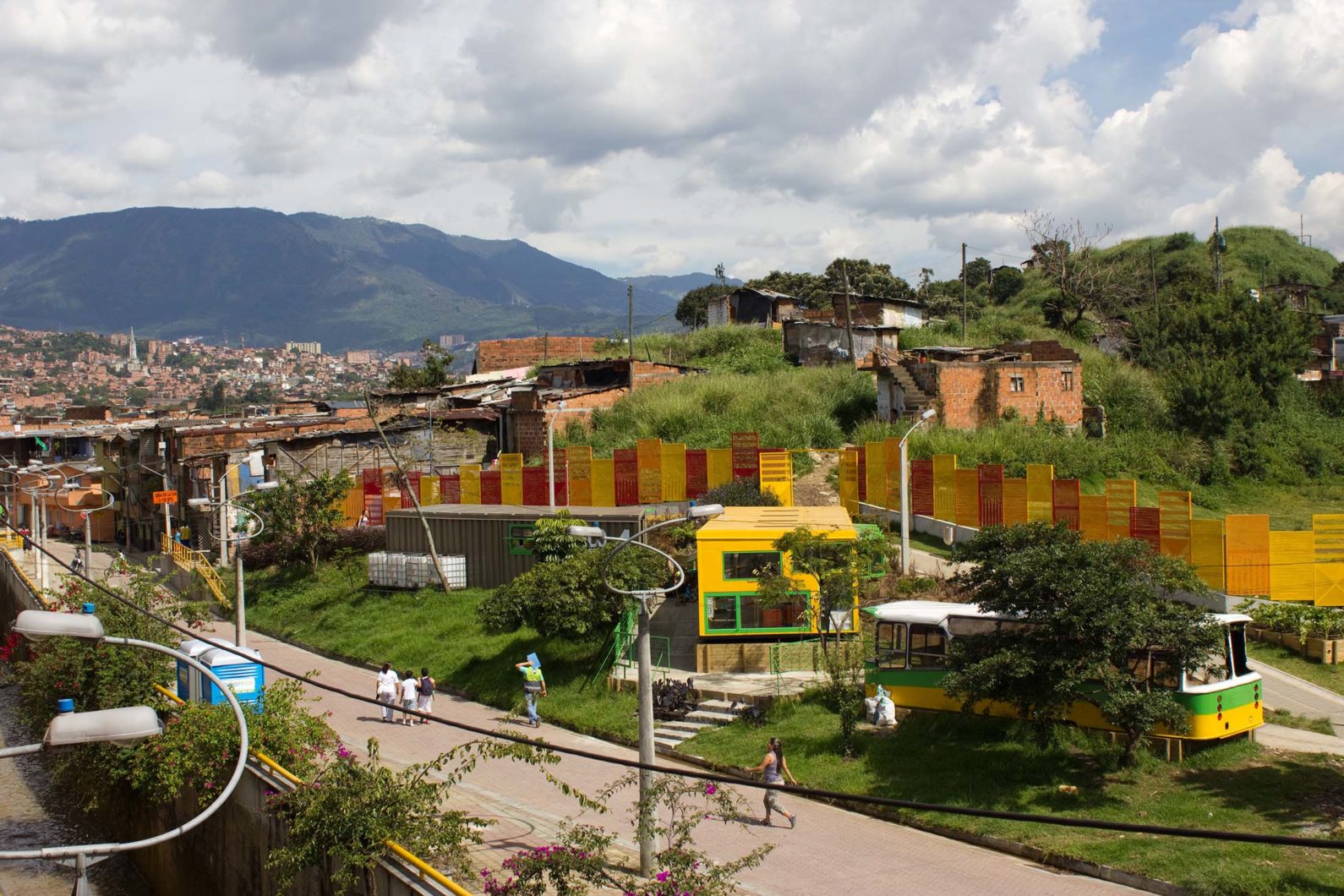Nodes of Cultural Development N.1 ‘El Morro’
A project recovering the urban area and improving social and environmental conditions
 Photos by Andres Galeano
Photos by Andres Galeano


Initiator(s)
ElPuente_lab, STEALTH.unlimited, María Camila Vélez, Yesenia Rodríguez
Description
The project consists of structures that resemble shipping containers and an abandoned bus that serve as communal areas. It was designed for the Moravian Cultural Development Centre (CDCM), considering the regional restrictions on the use of public space, as a bridge between art and architecture, building on the Experimental Architecture notion of reusing industrial materials. It is designed to be a collective artistic space that supports the neighborhood's urban transformation process through the construction of new public spaces like a multipurpose workshop, a reading room and library for kids and adults, a multipurpose space for movies and other events and a communal kitchen. The utilisation of recycled materials, beginning with a ready-made architectural idea and industrial-made components as shelter and functional structures, is emphasised in El Morro. The project supports an international exchange programme between artists and the community of Moravia.
Context
The neighbourhood of Moravia in Medellin grew as an unregulated settlement of communities that arrived in the city in the 1960s. The municipal dump "El Morro", established in the area in 1977 and closed in 1984, became a source of the neighbourhood’s survival, based on the reuse of recycled materials. In 2004 the Municipality of Medellín, under the guidance of Mayor Sergio Fajardo, began an integrated strategic plan to promote development through actions aimed at recovering the urban area and improving the social and environmental conditions. A sign of the neighbourhood’s rebirth is the Centro de Desarrollo Cultural de Moravia / Cultural Development Center of Moravia (CDCM), whose aim is to promote culture, education and arts. The initial budget available for the project was 25.000 Euros, and the team had two weeks to come up with an idea.
How to use it
During the design of the project, the collective operated by gathering a work team around a specific objective, with the aim of answering questions without any preconceived formulas. The collective was shaped as a “laboratory” where its members contributed with their own experience and adapted to the collective construction in dialogue with the inhabitants of the neighbourhood.
Goals
Beyond being a process of architectural design, the project gives a possibility of decentralising successful activities of the CDCM. The main objective of this process, which expands the range of existing cultural institutions by multiplying its space with temporary affordable structures, is to increase access to cultural activities for the community and strengthen community development processes.
Beneficial outcomes
The project has become a prototype to explore possibilities of similar interventions in other neighbourhoods in Medellin and beyond. Over the years, it had turned into a state-of-the-art lab using plants to take the toxins out of the neighbourhood’s soil.
Location
Moravia neighbourhoud, Medellín, Colombia
Field
Right to the city, Commons, Legislative Change
Strategy
Extraterritorial Reciprocity, Use it Together (U-I-T), Space Hijack
Users
Inhabitants of Moravia district
Maintained by
Alcadía de Medellín and Comfenalco Antioquia with the support of Mondriaan Fund, Cittadellarte - Fondazione Pistoletto, Unidad Taller del Espacio Público, Gerencia Macroproyecto de Moraira, Área Metropolitana del Valle de Aburrá, Jardin Botánico, Corporación Sentidos, Cocineros de Moravia, Red Cultural de Moravia
Duration
2011 - ongoing
Coefficient of Arte Util
80%
Category
Scientific
Pedagogical
Politics
Urban Development
Economy
Environment
Social






